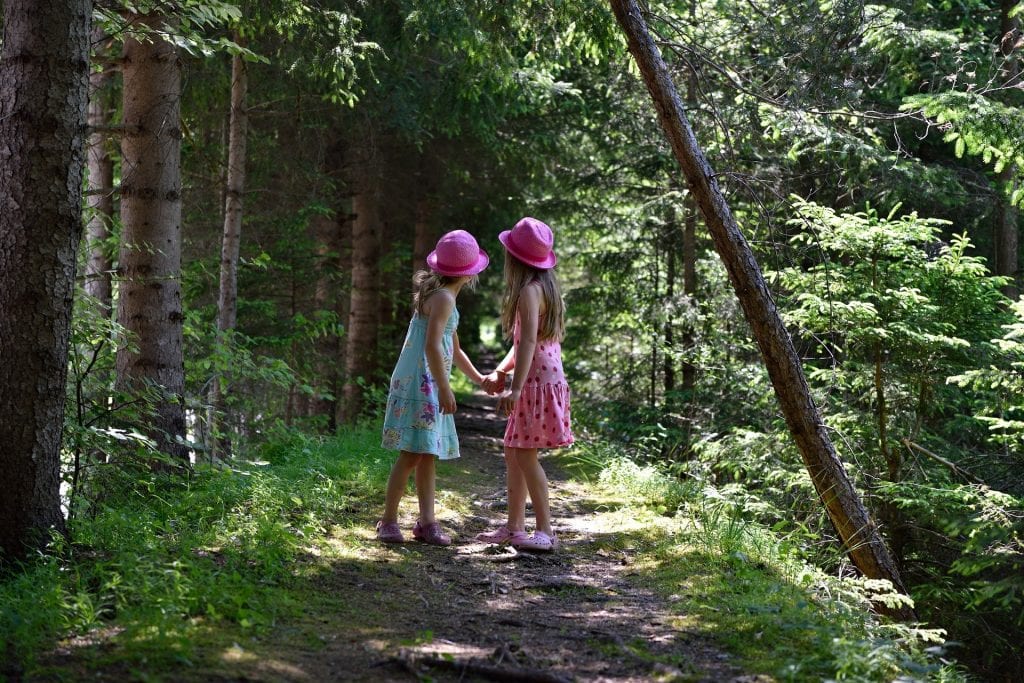Marine Protected Areas, National Parks, Nature Refuges, Private Reserves, State Forests, Uncategorized
Why National Parks Should be Valued – As Told Through the Lens of Children
Town planners and psychologists had been exploring the potential benefits of making natural spaces freely available to children to play and explore for decades. The release of the book Last Child in the Woods (Louv, 2005) articulated the disadvantages of children losing access to ‘wild areas’ once part of the fabric of towns and cities. ‘Nature deficit disorder’ was flagged as a critical issue by Louv (2005), as children began to spend less time outdoors.
In a review of literature dating back to the 1970s, Chawla (2015) examined the different ways that contact with nature can contribute to the health and well-being of children. Dixon and Naussbum (2012) explored this further, highlighting the role that nature plays in children acquiring an appreciation of the environment. This subsequently leads to developing the ability to feel and express concern for other species.
This concept is explored further by interviewing two children, aged 9 and 6 years of age, to gain a child’s perspective on the National Park Experience.
Favourite parts (9 year old) “There were lots of pretty waterfalls and beautiful nature. All around us there was cool plants. I even saw a kingfisher! We were allowed to walk through caves, balance on rocks and walk parts of big cliffs. It was really dangerous walking right next to the cliffs, but really cool.”
“I would tell my friends to go bushwalking there as they could see glow worms if they went at night and they could go swimming in the waterfalls. There was a giant waterfall, and we got to go right under it. I also saw a strangler-fig, it grew right around the tree. There were roots snaking right up the tree!”
Chawla (2015) stresses the importance of these types of nature-based experiences in enabling children to develop a sense of affiliation and connection with nature. Being able to walk through and observe places like Springbrook National Park enables children to develop this connection with nature. Ward (2014) adds that one of the primary benefits is that children become better observers and feel more connected to the natural world.
Tips for visiting National Parks: (6 year old) “My best tips for visiting a National Park are to bring your own food and water. Don’t wear thongs and bring a towel if you are going to go swimming. You shouldn’t pick any of the flowers and try to be quiet. You don’t want to scare away all of the birds and animals. Some animals sleep in the daytime you know.”
Children learn about the natural environment through exploration and engagement. Being immersed in rainforest whilst walking in Springbrook National Park can provide many opportunities to children like this 2 year old, to observe the natural world. These experiences present opportunities to explore and understand how ecosystems work, threats to wildlife and how humans protect these environments.
Cheng and Monroe (2012) suggest that learning, understanding and experiencing nature could positively influence children’s attitude towards the natural environment.
Why are national parks important? (9 year old) “National Parks are really important to make sure kids and adults have beautiful places to visit near where they live. People can see all the beauty there is in nature. You can hear all of the sounds and you can touch the waterfalls and all of the plants. It’s wet and muddy, but really fun!”
(6 year old) “So that people can go there, see the animals and appreciate how important it is to look after all of the different environments. The animals don’t have to be afraid. You can see where all of the creatures makes their homes.”
Ward (2014) stresses the importance of introducing children to nature, and asks ‘how can children care about nature if they haven’t experienced it firsthand?’ Queensland is home to many beautiful national and marine parks. Regardless of where you call home, there are a wealth of parks to visit. These areas protect our natural and cultural heritage and provide an amazing opportunity to get the next generation engaged and ready to get involved in conservation.
References
Chawla, L (2015). Benefits of Nature Contact for Children Journal of Planning Literature November 2015 30: 433-452.
Cheng, J. C-H and Monroe, M. C. (2012). Connection to Nature: Children’s Affective Attitude toward Nature, Environment and Behavior. Vol.44(1), p.31-49.
Dixon, R., and Nussbaum, M. C. (2012). Children’s Rights and a Capabilities Approach. Cornell Law Review 97 (3): 549-93.
Louv, R. (2005). Last Child in the Woods. Chapel Hill, NC: Algonquin Books.
Ward, C. (2014). Connecting young children with nature. Teaching Young Children, 8(1), 24-27.


